Paul Modrich
Biographical
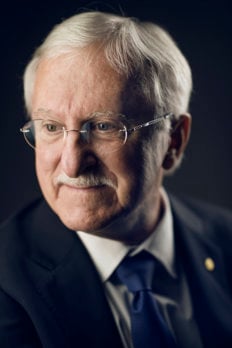
Ancestry
My knowledge of my ancestry is limited. My paternal grandparents emigrated from Croatia in the late 1800s and settled in the coalfields of southern Colorado. My father Laurence Modrich was born in 1912 in Walsenburg, Colorado and spent his early years in Ludlow, which like a number of other coal camps in the area, was owned by the Colorado Fuel and Iron Company. These mining camps have been described as “feudal dominions” [1] where wages and living conditions were poor. This prompted the Colorado coal strike of 1913–1914, largely organized by the United Mine Workers, and a period of violence that culminated in the 1914 Ludlow massacre, an attack by mine guards and the Colorado National Guard on the tent colony occupied by the striking Ludlow miners and their families, a tragedy chronicled by Woody Guthrie in his song of the same name. My paternal grandfather left at some point thereafter, and my grandmother moved her family a few miles south to Trinidad, Colorado where my father and his two sisters received their education and worked to help support their family. My father never talked much about this period in his life, but it was clear that it imbued him with a strong work ethic, which he imposed on my brother and me while we were growing up.
After graduation from the University of Colorado in 1935, my father moved to Raton in northeastern New Mexico, a town of about 8,000 people just south of the Colorado border, as a coach and biology teacher. He was drafted into the Army Air Forces in 1942, and while on leave from basic training with a friend from Muscatine, Iowa, he met my mother Margaret McTurk, a young woman of German and Scotch-Irish descent. They married in Muscatine in June of 1943 just prior to his transfer to Europe. After my father’s discharge in 1945, they returned to Raton where I was born in 1946 and my brother David in 1948.
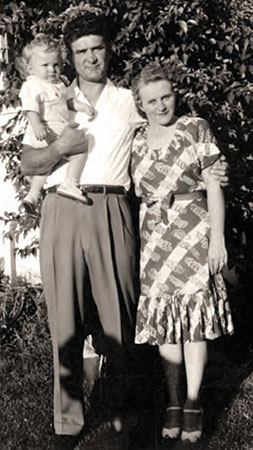
Growing up in New Mexico
My parents had quite different perspectives on many things, including child rearing. My mother was doting and highly involved in our daily lives, while my father was more hands-off and insistent that we develop independence. I recall my mother walking me the four blocks to and from school during kindergarten and my father’s judgment that I should henceforth be able to make it on my own, which I did.
Although Raton was relatively isolated in the foothills of the Sangre de Cristo mountains, it was for me an ideal place to be a child: a safe community of mostly warm-hearted people and a physical environment that I found (and still find) quite beautiful, and despite the town’s relatively provincial nature, it had an excellent school system. Given my father’s coaching responsibilities, our family life in those days was in many ways dominated by athletics. I enjoyed the excitement of high school football and basketball games, which were major family and community events, and playing pickup games with friends, but despite my father’s encouragement, participation in organized sports did not appeal to me.
I was more interested in photography and learning about nature, especially biology and astronomy. I spent a lot of time wandering the hills enjoying the abundance of plant and animal life, and I read popular scientific magazines, especially Scientific American, when I could get my hands on a copy. I am fairly certain that my lack of athletic interests was a disappointment to my father, but he and my mother were both extremely supportive of my developing interests in science. I took his sophomore biology course (he was the only biology teacher in town), which was presented from the classical perspective and which I found quite enjoyable. The following year he was a participating teacher in the experimental Biological Sciences Curriculum Study, which introduced molecular aspects of biology into the high school textbook, and he advised me to “learn about this DNA stuff because it’s really interesting,” which I eventually did.
I found reading about science to be satisfying, but I wanted to be more than a spectator. Paging through an issue of Scientific American when I was 15, I came across an ad for a set of radioisotopes, which at the time you could possess in small quantities without a license. I thought I might be able to do some fun things with them and convinced my father to order them for me. About two weeks later he received a call from the freight manager at the train depot informing him that they had a package addressed to him that was labeled radioactive and with the admonishment “Do not stand within 15 feet of this parcel unless absolutely necessary.” He nevertheless picked it up and brought it home to me (I now know that the low level quantities in the samples are relatively harmless unless ingested). There were about six different isotopes, including 32P-phosphate, 35S-sulfate, 131I-iodide, 22Na-chloride, and 65Zn-chloride. I used solutions of these isotopes to germinate tomato, corn, radish, and bean seeds, or allowed geranium and violet leaf cuttings to absorb the isotopes. I also injected them into several frogs. After several days I exposed the seedlings, leaves, and pithed frogs to X-ray film to visualize the isotope distributions. The results were particularly striking in several cases: the 32P and 131I revealed the vascular structure of the leaves and the former isotope concentrated within the skeletal system of the frog, while the 35S was uniformly distributed throughout the seedlings. When we were going through my mother’s things after she passed away in 2002, my wife found the notebook and films documenting my first experiment. I had forgotten about it, but my mother had saved it all those years.
In 1963 after my junior year in high school I participated in a National Science Foundation summer program at the University of Colorado Institute of Arctic and Alpine Research. The high altitude laboratory (9,000 or 10,000 feet as I recall) was located in the Rockies, where we lived in small cabins. The high school students assisted in the counting and dating of trees and plants within defined ecological stands and in the collection water samples from glaciers and snowbanks. Because this was the period of Nevada above-ground nuclear testing and because the snowmelt fed the Boulder city watershed, the latter samples were analyzed for radioactive fallout. I asked the director, whose name I cannot recall, if I might also collect plant and animal samples from the area. He graciously agreed, and I collected a variety of plant samples and trapped field mice and shrews downstream from the glacier/snowbank runoff. After dissection of the animals, I used a gasflow counter in the evenings to determine radioactivity in the residue from incinerated plant and animal samples. The data from these experiments became my first and only science fair project, which did well locally and secured a trip to the National Science Fair in Baltimore. Although my entry received only an honorable mention at the National, the Baltimore trip with a side excursion to the 1964 World’s Fair in New York City was my first urban experience and a memorable adventure.
With strong encouragement from my father and a little grumbling from us, my brother and I acquired paper routes when we were in junior high school, delivering newspapers after school and on Saturdays, with the idea that we should begin saving for college. One of the major contributors to Raton’s economy at the time was a racetrack that hosted some of the best quarter horses in the country, attracting racing fans and gamblers from throughout the Southwest and almost doubling the town’s population on summer weekends. I began working several evenings a week as a clerk at a local motel when I was 16, and at the track on weekends where I sold and cashed parimutuel tickets. The racetrack position was highly exciting and taught me a great deal about human nature. I continued every summer into my early college years.
College
I was admitted to M.I.T. with scholarship and loan support. With supplementation from my savings and some help from my parents, I was able to get by. My arrival in Cambridge in 1964, where I moved into the East Campus dormitory, was an academic culture shock. My education in Raton had been solid, but I quickly learned that the vast majority of M.I.T. freshman had completed more advanced courses, especially in math. When Professor Mattuck began his first calculus lecture with the statement “I assume you all know what a derivative is,” I knew I had my work cut out for me. The first semester was a struggle, but with the support and friendship of several dorm mates, I managed to catch up and things became much easier.
With the exception of those who advanced-placed out, M.I.T. freshmen and sophomores were required to take the same courses in math, chemistry, physics and humanities along with one or two elective courses selected by the student. I enjoyed vector calculus and statistical mechanics, but was captivated by the introductory biology course taught by Cyrus Levinthal, which used the first edition of Jim Watson‘s Molecular Biology of the Gene as a text, and I declared biology as my major. M.I.T. is justifiably known for its strong commitment to undergraduate education, and this was especially true for the Biology Department, which at the time hosted a relatively small number of undergraduate majors. I recall as particularly memorable a superb course in microbiology taught by Salvador Luria and another in biochemistry, taught primarily by Vernon Ingram.
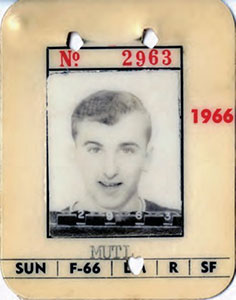
As a freshman, I worked about 15 hours a week on the evening shift at a campus grill, which I loathed, but I needed the money. During my sophomore year I approached Dr. Luria, who was my undergraduate advisor, about the possibility of a part-time position in the Biology Department. He got me job with Ethan Signer, who was studying genetic recombination in bacteriophage lambda. Ethan’s lab was a popular destination in the Biology Department, and the majority of the graduate students and postdocs in his group at the time, which included Fred Ausubel, Jim Zissler, Steve Heinemann, Marc Shulman, Martha Howe and Ira Herskowitz, would have their own distinguished careers. My initial responsibility in the Signer lab was washing glassware, but Fred Ausubel and Steve Heinemann got me involved in experimental work, and I began spending much of my time in the lab assisting with the recombination studies. I found the work incredibly interesting, read the few papers I could find on the mechanism of recombination [2–5] and took a graduate course in genetics taught by Ethan Signer and a recent arrival at M.I.T., David Botstein. I loved the intellectual and experimental aspects of the laboratory experience, and decided that this was what I wanted to do with my life. Because it was obvious that genetic phenomena could be understood only in terms of molecular events occurring at the DNA level, I applied to graduate school with this in mind and was admitted to the Stanford Biochemistry Department, which was widely known for its seminal contributions to DNA biochemistry.
Graduate school and postdoctoral work
My wife Ann and I bought a used Corvair Corsa from an M.I.T. professor, who oddly commented at the time of the sale that “this car doesn’t leak a drop of oil.” This proved to be untrue, but we made it safely across country and arrived in Palo Alto in August of 1968, where I learned to do science working in Bob Lehman’s lab. Bob was the perfect mentor, a great scientist but a kind and gentle man who gave me the freedom to pursue my ideas with only a nudge now and then when I needed it. Despite the intensity of the environment within the department, perhaps the most intense I’ve experienced in my career, I was extremely comfortable and happy in the Lehman laboratory, and totally consumed by my experimental work, which addressed the mechanism and biology of E. coli DNA ligase. Sixty-hour weeks were the norm, but the science and camaraderie made the long hours enjoyable.
The department was quite small, individuals from different research groups worked in common laboratory space, and equipment and reagents were shared. The family-like intimacy fostered close friendships, in my case with Dick Gumport, Bruce Konrad, Jack Griffith, Fred Schachat and Doug Brutlag, and my social life largely centered around the department, with a periodic poker game providing great fun and wonderful company. Ongoing science was the favored topic of conversation over lunch and dinner, and we all knew in some detail what was going on in other laboratories. It was during one of our daily trips to the hospital cafeteria that I met two young faculty members of the Pathology Department, Errol Friedberg and David Clayton, who graciously shared their table with us, and we continued to meet and chat on many occasions. I had some familiarity with ongoing work in DNA repair, but it was with Errol that I had my first serious discussions about the status and future of the field.
This was a particularly exciting time at Stanford Biochemistry: the mechanisms responsible for initiation of DNA replication were being solved in Arthur Kornberg‘s lab, and gene cloning methods were being developed in the laboratories of Dale Kaiser and Paul Berg. The Stanford faculty took great interest in all of the students in the department. George Stark and Buzz Baldwin had particularly important input into my development as graduate student, as did Arthur Kornberg, who with Bob Lehman had a continued and important influence on my life long after I left Stanford.
My intent after finishing my Ph.D. was to do two postdocs, the first with Charles Richardson at Harvard Medical School studying DNA replication and the second with Jean-Pierre Changeux in Paris where I would work on the acetylcholine receptor. However, while at Stanford I was approached by the University of California, Berkeley Chemistry Department about a possible junior faculty position. I interviewed for the job and was offered the position. This put me in a quandary because I was not looking for a job at the time and had nothing to compare with the UC offer, and Berkeley would permit only a one-year grace period for postdoctoral work. The appeal of the position was that Jim Wang was in Berkeley Chemistry. I greatly admired Jim’s elegant topoisomerase and DNA structural work, and knew him well because we had collaborated a year earlier on some ligase experiments. After a number of discussions with Bob, I decided to accept the Berkeley position. I canceled my postdoc with Changeux and after completing my thesis, left Palo Alto to spend a year in Charles Richardson’s lab. I’ve had many second thoughts about the decision to alter my postdoctoral plans, and given an amateur interest in neurobiology that began during my undergraduate days, I still reflect now and then on “the road not taken” to the Changeux laboratory.
Ann, our son Adam, who was born seven months earlier in Palo Alto, and I arrived in Boston in June of 1973 where we moved into an apartment in Brighton. Given the familiarity with DNA work that I had acquired at Stanford, it was a simple matter to get underway in Charles’ lab, where the primary subject of study was bacteriophage T7 DNA replication, although my first day did not go too well. Upon arrival in the Richardson lab, each new person was given a matched set of expensive quartz cuvettes, and I managed to break both of mine within the first few hours. I confessed to Charles and wondered whether he was having second thoughts about the new guy he had hired. My work addressed the nature of the E. coli tsnC gene product, which is required for T7 DNA replication in vivo and as I found, in vitro as well. I identified the tsnC protein as a small 12 kDa polypeptide that forms a 1:1 complex with the 80 kDa T7 gene 5 protein, previously identified as the DNA polymerase, and showed that both subunits are required for polymerase functionality. The small protein was identified as thioredoxin shortly after I left the lab.
Charles made a conscious effort to ensure that has lab was a fun place to work. We took turns cooking lunch on Fridays and at 4:00 each afternoon Judy Campbell, Jack Chase, Roger Fleishman, David Hinkle, Warren Masker and I would retire to Charles’ office for beer and tall tales. Practical jokes were common, and those perpetrated by Jack Chase often involved small explosions. It was highly entertaining, the year passed quickly, and it was soon time to leave.
The University of California and Duke University
We arrived in Berkeley in early July of 1974 and moved into a small apartment within walking distance of campus. My first visit to the Chemistry Department was disappointing in several ways. I learned that the lab space I had been shown during my recruitment was not available and that I had been assigned a much smaller lab on the basement breezeway level of Hildebrand Hall, four floors from the nearest cold room (an essential tool for a biochemist). I also learned that rather than one freshman chemistry lab section a week as I had been promised, I would be responsible for all of the lab sections in the freshman honors Chem 4 course, and the first semester would deal with quantitative analysis, about which I knew very little.
On the plus side, an NIH grant application that I had written while in Charles’ lab had done well, and we had funding to begin work. Genetic regulatory proteins that recognize unique DNA sequences were of great interest, and like many others, I was intrigued by the mechanisms that such proteins might use to locate and identify their relatively rare recognition sites. The recently discovered EcoRI restriction endonuclease and modification methylase [6] seemed ideal for pursuit of such questions because we could compare two different proteins that recognize the same d(GAATTC) sequence and because recognition by either protein culminates in covalent alteration of the sequence in ways that are easily scored. I hired an outstanding technician, Donna Zabel, and we spent the rest of the summer setting up the lab and getting EcoRI endonuclease experiments underway. I devoted my spare time to learning about quantitative analysis.
Life became much more intense once classes began. Juggling my teaching obligations, experiments, and family responsibilities proved difficult for me, and I was spending little time at home. I also learned that my research interests were not very appealing to the chemistry graduate students, although my first student, Bob Rubin, did join the lab in the spring of 1975. I was unhappy and discouraged, and discussed my predicament with Bob Lehman, Charles Richardson and several other friends. I don’t know the details, but this prompted a call in the fall of 1975 from Bob Hill, Chair of the Department of Biochemistry at Duke University, who informed me that he had a junior faculty position available in his department and encouraged me to interview for the position. I enjoyed the Duke visit, was very impressed by the department, and enchanted by the rural beauty of the North Carolina Piedmont. I was offered and accepted the job.
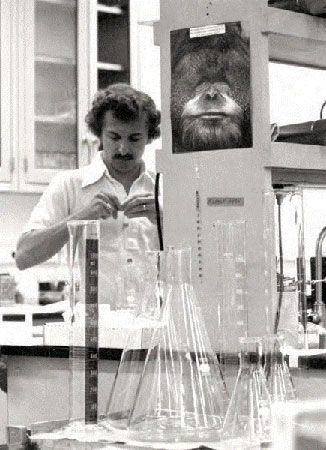
Bob Rubin flew to North Carolina with our enzymes, North American Van Lines moved our lab equipment, and Ann, Adam, our seven month-old daughter Amy, and I drove across country, arriving in Durham midsummer of 1976. With the knowledge that we were coming, Gail Herman Geier, a Duke M.D./Ph.D. student had joined the group and began setting up the lab prior to our arrival, and we were up and running shortly after our equipment arrived. The department was extremely supportive, the lab began to grow, and because my teaching load was fairly light, I had plenty of time for my own experimental work, which has always been a source of enjoyment for me.
Our early work at Duke focused on the EcoRI enzymes. Like many others, I was interested in the nature of the protein-DNA contacts involved in specific recognition, but my primary interest was the mechanism utilized by this class of protein to search a DNA molecule in order to locate a specific recognition site within a huge background on nonspecific sequence. Manfred Eigen had suggested that the high kinetic efficiency of this process might reflect a constrained diffusion mechanism in which initial collision of a protein with the DNA molecule is followed by a diffusion process that is largely restricted to the domain of the polynucleotide [7], but direct evidence for this idea was lacking. Bill Jack, Brian Terry, and David Wright proved that kinetic interaction of EcoRI endonuclease with DNA is dominated by such a mechanism. I regard these experiments as some of the personally most satisfying that we’ve done in the lab.
At the time, recognition of palindromic DNA sequences was believed to be mediated by homodimeric proteins, as is the case for recognition of the d(GAATTC) sequence by EcoRI endonuclease. However, Bob Rubin found that unlike the endonuclease, EcoRI methylase recognizes this sequence as a monomer. This curious finding prompted us to look at a second DNA methylase, the E. coli DNA adenine methylase (Dam methylase), which we chose for two reasons. Like EcoRI methylase, the Dam enzyme recognizes a simple palindrome (d(GATC)), but the biology of the Dam methylase was particularly intriguing. Genetic inactivation of the dam gene had been shown to result in a large increase in mutation rate, suggesting that Dam methylase plays an important role in genetic stabilization [8]. We were also aware of Matt Meselson’s suggestion that DNA methylation might provide the strand signal for correction of replication errors by mismatch repair [9], which would be consistent with a DNA methylation function in mutation avoidance.
Gail Herman isolated Dam methylase in pure form, showed that like the EcoRI enzyme it functions as a monomer, and contributed in a small way to confirmation of the Meselson proposal that methylation controls the strand direction of E. coli mismatch repair, which was the beginning of our work on this pathway. Our biochemical studies on the mechanisms of mismatch repair began with A-Lien Lu’s demonstration that she could detect the reaction in extracts prepared from E. coli cells, and we spent the next twenty years working out the molecular nature of the bacterial methyl-directed pathway and its involvement in the fidelity of DNA replication and genetic recombination.
When Jude Holmes entered the lab as an M.D./Ph.D. student in 1987, I suggested that he try to detect strand-directed mismatch repair in extracts of Drosophila melanogaster and human cell lines. Jude was successful, and our work on the human reaction quickly expanded as others joined the lab. Our interests in the mechanisms and functions of human mismatch repair have occupied us for twenty-five years and remain ongoing. A particularly memorable occurrence during the early stages of this work was the publication of two papers showing that tumors from patients with the common hereditary cancer Lynch syndrome, as well as a subset of tumors from sporadic cancer patients are characterized by frequent mutations in simple repetitive DNA sequences [10, 11]. Because we knew that mismatch repair plays an important role in stabilizing such sequences in bacteria, I had a suspicion that these tumor cells might be defective in mismatch repair. We quickly confirmed this possibility, a finding that has made our subsequent work on mismatch repair all the more rewarding.
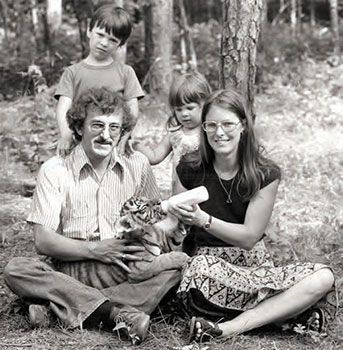
Personal life
My children Adam and Amy displayed little enthusiasm for science as youngsters, although both demonstrated interest and talent in art. Amy now teaches art in Livermore, California, and perhaps oddly is nurturing a late-blooming interest in astronomy. Adam suffered a traumatic brain injury in an automobile accident in 1995, and although mobile and usually in good spirits, he remains effectively disabled. Adjustment to this life-changing event has been difficult for Adam and for us as parents, but your only choice in such a situation is acceptance, and I believe we have achieved that. The funds from my Nobel award will ultimately contribute to Adam’s support when I am no longer alive.
My second wife, Vickers Burdett, and I married in 1980. We met at Duke where Vickers had a non-tenure track faculty appointment and her own laboratory in the Department of Microbiology, where she studied the mechanisms of bacterial tetracycline resistance. The non-tenure track position required that she obtain 100% of her salary from research grants, which she did for 20 years. When she lost her grant, she lost her job and moved to my laboratory in 1998 as a Senior Scientist where she has worked on mismatch repair. During the past seventeen years we’ve spent twenty-four hours a day together, and we still enjoy each other’s company.
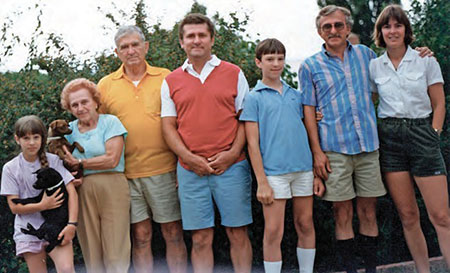
In appreciation
The Duke Department of Biochemistry has provided a wonderful environment for our work and has been my secondary home for the past forty years. Bob Hill was a superb Chair, who nurtured my career during the critical early stages and tolerated an occasionally irreverent assistant professor. Bob Webster, Irwin Fridovich, K. V. Rajagopalan, Tao Hsieh, Ken Kreuzer, and Chris Raetz have enriched my life both personally and professionally, as have University of North Carolina colleagues Darrel Stafford, Jack Griffith and Aziz Sancar.
A research laboratory in many ways is like an extended family, and the longterm personal connections have always been a source of pleasure to me. My lecture acknowledges many of those who contributed to our mismatch repair studies, but time constraints precluded description of the contributions of Beverly Yashar, Dwayne Allen, Leroy Worth, John Taylor, Marc Prudhomme, David Miller, Wendy Bedale, Susan Littman, Dawn Chandrasekhar, Yizhong Sha, Greg Runyon, Maynard Bronstein, Rochelle Bazemore, Derek Duckett, Shuntai Wang, Kent Christiansen, Qing Dong, Len Blackwell, Keith Bjornson, Diana Martik, Claudia Spampinato, Rochelle Bazemore, Sihong Chen, Ravi Iyer, Sally York, Lored Asllani, Olga Lukianova, Yanan Fang, Elisabeth Penland, Yiyong Liu, Xingdong Zhang, Hongbing Shao, and Shanen Sherrer. I also want to acknowledge the collaborators who contributed to the work I did not describe: Josef Jiricny, Jeffrey Miller, Bill Thilly, Miro Radman, Henry Friedman, Aziz Sancar, David Lilley, Robert Brown, Dorothy Erie, Karen Vasquez, and my long-term structural collaborator, Lorena Beese. I also thank Barbara McCaskill and Joanne Bisson for their superb assistance in administration of the laboratory.
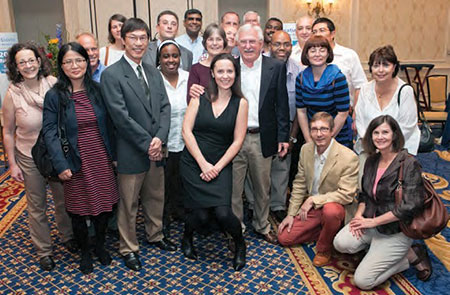
References
- Zinn, H., Frank, D. and Kelley, R.D.G. (2001) Three Strikes. Beacon Press, Boston.
- Meselson, M. and Weigle, J.J. (1961) Chromosome breakage accompanying genetic recombination in bacteriophage. Proc. Natl. Acad. Sci. U. S. A., 47, 857–868.
- Holliday, R. (1964) A mechanism for gene conversion in fungi. Genet. Res., 5, 282–304.
- Tomizawa, J.I. and Anraku, N. (1964) Molecular Mechanisms of Genetic Recombination in Bacteriophage. Ii. Joining of Parental DNA Molecules of Phage T4. J. Mol. Biol., 8, 516–540.
- Tomizawa, J.I., Anraku, N. and Iwama, Y. (1966) Molecular mechanisms of genetic recombination in bacteriophage. VI. A mutant defective in the joining of DNA molecules. J. Mol. Biol., 21, 247–253.
- Hedgpeth, J., Goodman, H.M. and Boyer, H.W. (1972) DNA nucleotide sequence restricted by the RI endonuclease. Proc. Natl. Acad. Sci. U. S. A., 69, 3448–3452.
- Richter, P.H. and Eigen, M. (1974) Diffusion controlled reaction rates in spheroidal geometry. Application to repressor-operator association and membrane bound enzymes. Biophys. Chem., 2, 255–263.
- Marinus, M.G. and Morris, N.R. (1974) Biological function for 6-methyladenine residues in the DNA of Escherichia coli K12. J. Mol. Biol., 85, 309–322.
- Wagner, R. and Meselson, M. (1976) Repair tracts in mismatched DNA heteroduplexes. Proc. Natl. Acad. Sci. U. S. A., 73, 4135–4139.
- Aaltonen, L.A., Peltomäki, P., Leach, F.S., Sistonen, P., Pylkkänen, L., Mecklin, J.-P., Järvinen, H., Powell, S.M., Jen, J., Hamilton, S.R., Petersen, G.M., Kinzler, K.W., Vogelstein, B. and de la Chapelle, A. (1993) Clues to the pathogenesis of familial colorectal cancer. Science, 260, 812–816.
- Ionov, Y., Peinado, M.A., Malkhosyan, S., Shibata, D. and Perucho, M. (1993) Ubiquitous somatic mutations in simple repeated sequences reveal a new mechanism for colonic carcinogenesis. Nature, 363, 558–561.
This autobiography/biography was written at the time of the award and later published in the book series Les Prix Nobel/ Nobel Lectures/The Nobel Prizes. The information is sometimes updated with an addendum submitted by the Laureate.
Nobel Prizes and laureates
Six prizes were awarded for achievements that have conferred the greatest benefit to humankind. The 14 laureates' work and discoveries range from quantum tunnelling to promoting democratic rights.
See them all presented here.
